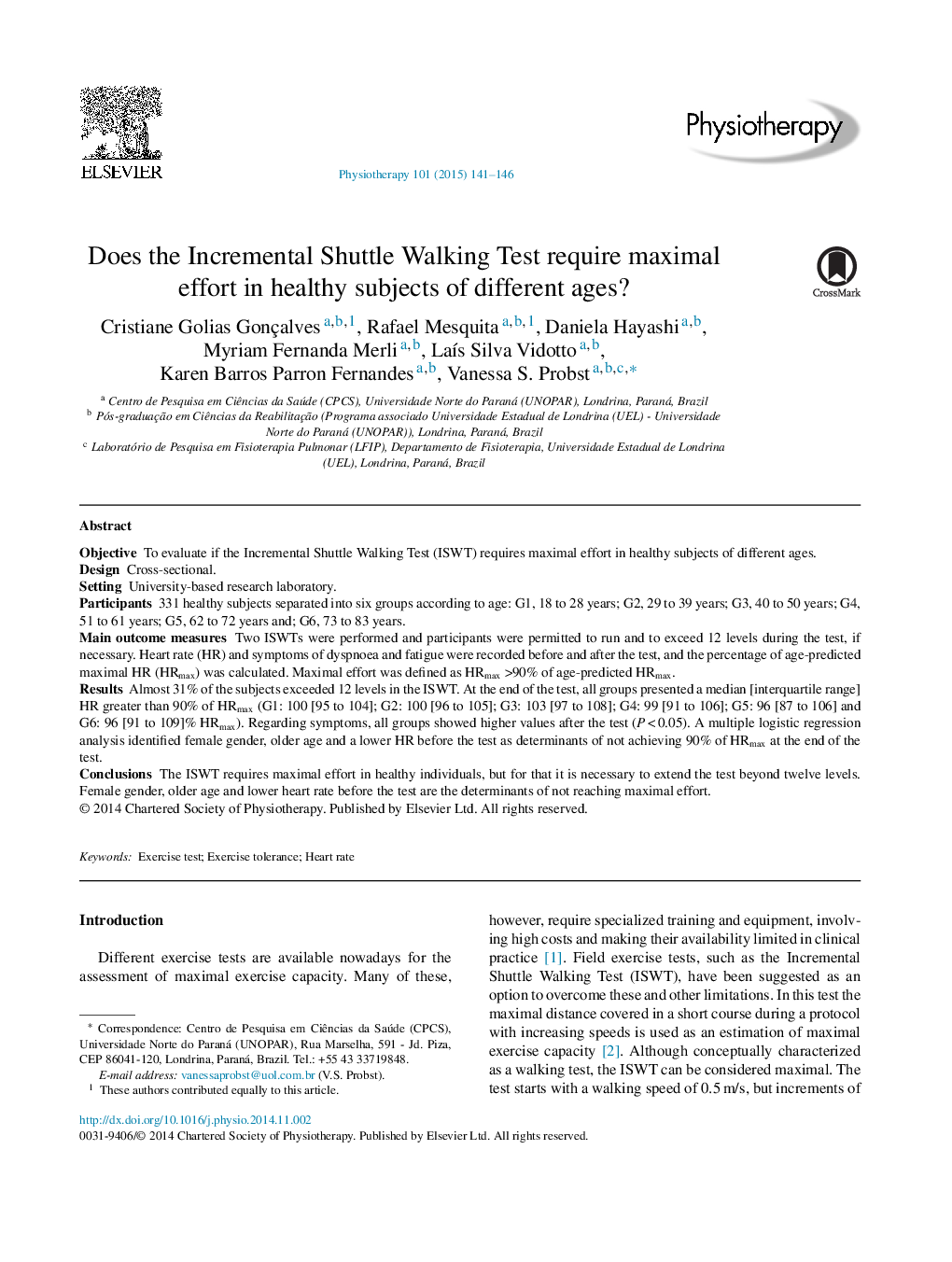| کد مقاله | کد نشریه | سال انتشار | مقاله انگلیسی | نسخه تمام متن |
|---|---|---|---|---|
| 5865107 | 1136060 | 2015 | 6 صفحه PDF | دانلود رایگان |
ObjectiveTo evaluate if the Incremental Shuttle Walking Test (ISWT) requires maximal effort in healthy subjects of different ages.DesignCross-sectional.SettingUniversity-based research laboratory.Participants331 healthy subjects separated into six groups according to age: G1, 18 to 28 years; G2, 29 to 39 years; G3, 40 to 50 years; G4, 51 to 61 years; G5, 62 to 72 years and; G6, 73 to 83 years.Main outcome measuresTwo ISWTs were performed and participants were permitted to run and to exceed 12 levels during the test, if necessary. Heart rate (HR) and symptoms of dyspnoea and fatigue were recorded before and after the test, and the percentage of age-predicted maximal HR (HRmax) was calculated. Maximal effort was defined as HRmax >90% of age-predicted HRmax.ResultsAlmost 31% of the subjects exceeded 12 levels in the ISWT. At the end of the test, all groups presented a median [interquartile range] HR greater than 90% of HRmax (G1: 100 [95 to 104]; G2: 100 [96 to 105]; G3: 103 [97 to 108]; G4: 99 [91 to 106]; G5: 96 [87 to 106] and G6: 96 [91 to 109]% HRmax). Regarding symptoms, all groups showed higher values after the test (PÂ <Â 0.05). A multiple logistic regression analysis identified female gender, older age and a lower HR before the test as determinants of not achieving 90% of HRmax at the end of the test.ConclusionsThe ISWT requires maximal effort in healthy individuals, but for that it is necessary to extend the test beyond twelve levels. Female gender, older age and lower heart rate before the test are the determinants of not reaching maximal effort.
Journal: Physiotherapy - Volume 101, Issue 2, June 2015, Pages 141-146
